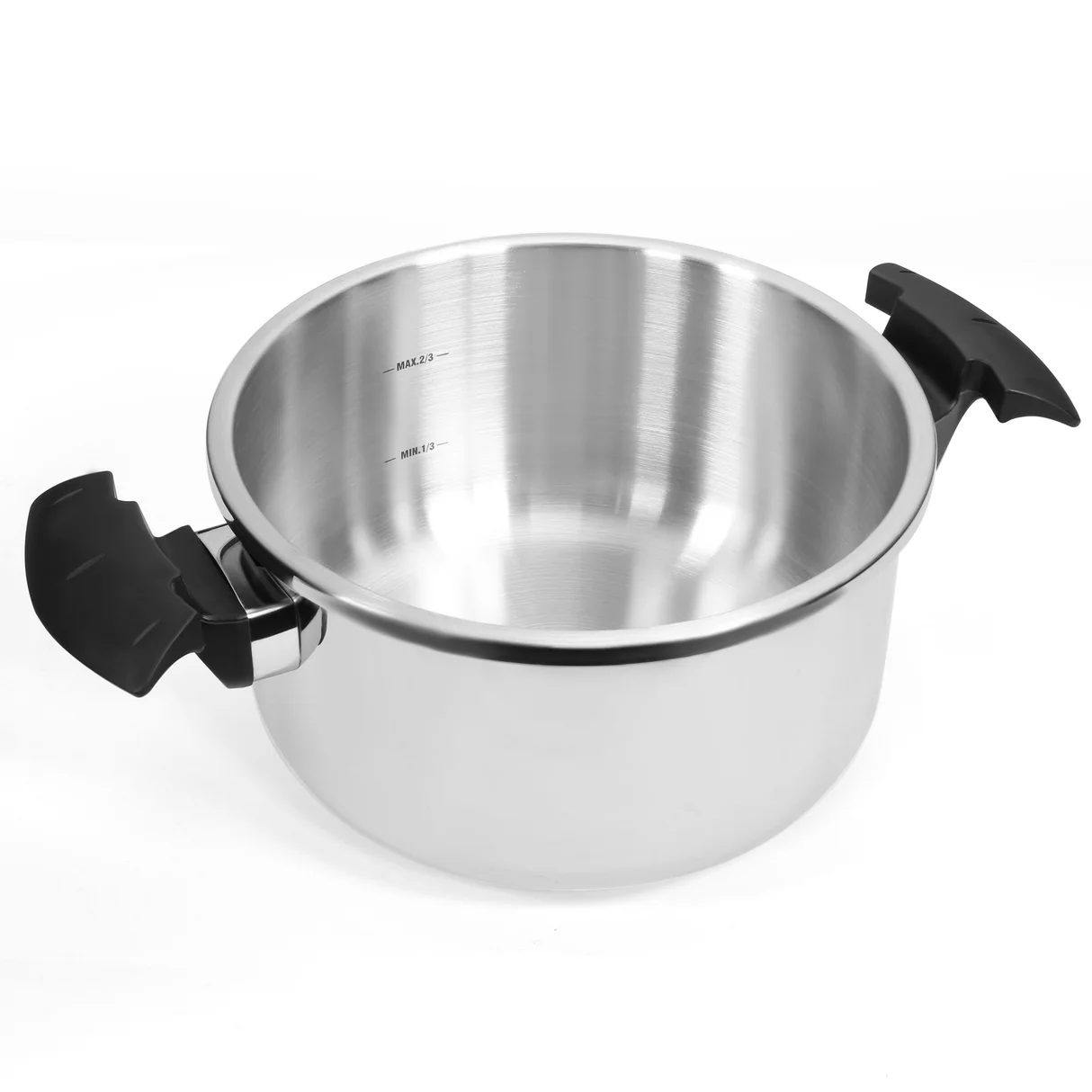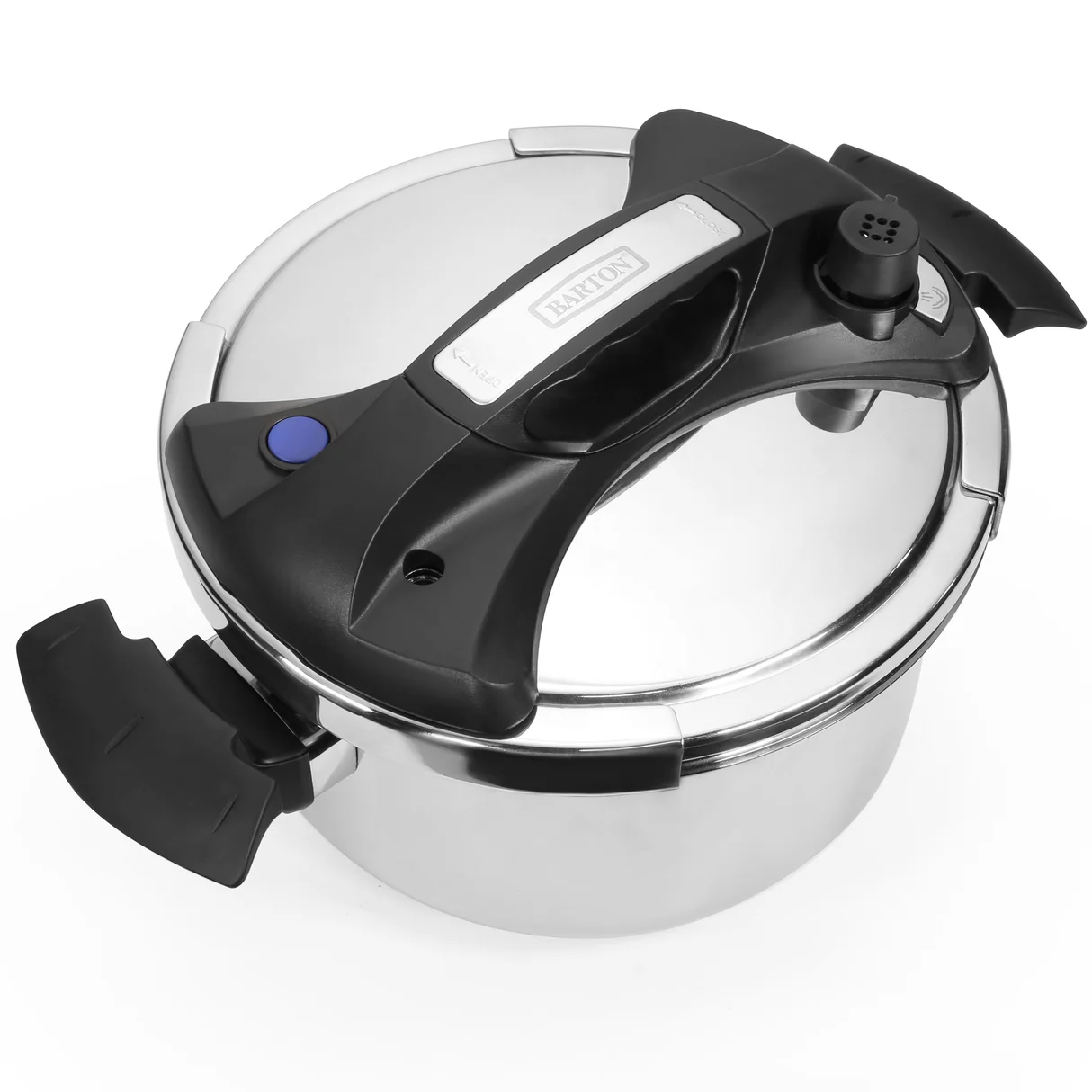So, you’ve got a pressure cooker, or you’re thinking about getting one. It sits on the counter, gleaming and maybe a little intimidating. You’re probably wondering, What Can You Cook In A Pressure Cooker besides a simple soup or stew? Let’s be honest, the real question is: what can’t you cook? This incredible kitchen gadget is your secret weapon for creating fork-tender meats, perfectly cooked grains, and even decadent desserts in a fraction of the time. It’s not just about speed; it’s about unlocking deeper flavors and nutrients you didn’t even know were there. Forget those horror stories from your grandmother’s era; modern pressure cookers are safe, easy to use, and about to become your new best friend in the kitchen.
How Does a Pressure Cooker Even Work?
It might seem like magic, but it’s pure science. A pressure cooker works by creating a tightly sealed environment. As the liquid inside heats up, it produces steam. Because the steam can’t escape, it builds up pressure inside the pot. This increased pressure raises the boiling point of water from 212°F (100°C) to as high as 250°F (121°C). This superheated steam cooks food dramatically faster—we’re talking up to 70% faster.
Think of it like this: trying to hike up a hill is harder than walking on flat ground. In a regular pot, water molecules are “hiking” to escape as steam. In a pressure cooker, the high pressure is like a giant hand pushing down, making it much harder for them to escape. They have to get much, much hotter to boil, and that intense heat is what cooks your food so quickly and efficiently.
So, Really, What Can You Cook in a Pressure Cooker?
Okay, let’s get to the good stuff. The versatility of a pressure cooker is staggering. Once you get the hang of it, you’ll find yourself reaching for it almost daily.
Tough Cuts of Meat Transformed
This is where the pressure cooker truly shines. It can take inexpensive, tough cuts of meat like beef chuck, pork shoulder, or lamb shanks and turn them into melt-in-your-mouth masterpieces in under an hour.
- Pulled Pork or Chicken: Cook a whole pork shoulder in about 60-75 minutes for the most succulent pulled pork you’ve ever had.
- Beef Stew: A rich, flavorful beef stew that normally simmers for hours can be ready in 35-40 minutes.
- Ribs: Fall-off-the-bone baby back ribs in 25 minutes? Yes, please. Just finish them on the grill or under the broiler for that perfect caramelized crust.
Beans and Legumes from Scratch
Tired of remembering to soak beans overnight? The pressure cooker is your savior. You can take dry, unsoaked beans and have them perfectly cooked and ready for chilis, salads, or side dishes in about 20-40 minutes, depending on the bean. No more canned beans with that metallic taste!
Grains and Cereals in a Flash
From creamy risotto to perfectly fluffy quinoa, the pressure cooker handles grains with ease.
- Risotto: No more standing over the stove, stirring constantly for 30 minutes. Pressure cooker risotto is largely hands-off and ready in about 7-10 minutes of cook time.
- Steel-Cut Oats: A hearty, healthy breakfast is ready in about 10-15 minutes instead of 45.
- Brown Rice: Get perfectly cooked brown rice without the chewiness in about 20 minutes.
Soups and Stocks with Deep Flavor
Pressure cooking is fantastic for extracting every last bit of flavor. A chicken or beef stock that would normally simmer for 8-12 hours on the stovetop can develop a similar depth of flavor in just 1-2 hours. Lentil soup, split pea soup, or a hearty vegetable soup can be ready from start to finish in under 30 minutes.
“The magic of pressure cooking isn’t just speed; it’s flavor intensification. The high-pressure environment forces liquid into the food, infusing every bite with the herbs, spices, and aromatics in the pot. It creates a depth you can’t replicate quickly any other way.”
– Chef Isabella Rossi, author of “Modern Pressure Cooking”
Even Desserts!
This might surprise you, but yes, you can make desserts. The moist, steamy environment is perfect for things that can otherwise dry out in an oven.
- Cheesecake: Creamy, crack-free cheesecakes are a breeze using the pot-in-pot method.
- Puddings and Custards: Items like crème brûlée or bread pudding cook gently and evenly.
- Lava Cakes: Perfectly molten chocolate lava cakes can be made in just a few minutes.
Getting Started: A No-Fear Guide for Newbies
Diving in can feel a bit daunting. Let’s break it down into simple, manageable steps.
Stovetop vs. Electric: What’s the Difference?
There are two main types: the classic stovetop pressure cooker and the modern electric pressure cooker (like the Instant Pot). Stovetop models can often reach higher pressures (around 15 PSI) and heat up faster, giving you a bit more control. Electric models are incredibly convenient with their set-it-and-forget-it timers, multiple functions (like sauté and slow cook), and built-in safety features. For most beginners, an electric model is a fantastic, user-friendly starting point.
Understanding Pressure Release: Quick vs. Natural
This is one of the most important concepts to master. How you release the pressure affects the final texture of your food.
- Natural Release (NPR): You simply turn off the heat (or the cooker) and let the pressure drop on its own. This can take anywhere from 10 to 30 minutes. This method is best for meats, soups, and beans, as the gradual release keeps them tender and intact.
- Quick Release (QR): You manually open the steam release valve to let the steam out rapidly. It’s loud and steamy, but it’s fast. Use this method for delicate foods like vegetables, fish, or pasta that you want to prevent from overcooking. Always keep your hands and face away from the valve when doing a quick release!
Common Mistakes to Avoid (I’ve Made Them So You Don’t Have To)
My first time using a pressure cooker, I tried to make a lentil soup and filled the pot way too high. The result was a sputtering valve and a minor lentil-volcano on my stove. Learn from my mistakes!
- Overfilling the Pot: This is a major safety risk. Never fill your pressure cooker more than two-thirds full for most foods, and only half-full for foods that expand or foam, like beans, grains, and pasta.
- Not Using Enough Liquid: You need at least one cup of liquid (water, broth, etc.) to generate the steam required to build pressure. A dry pot won’t pressurize and can scorch your food.
- Forgetting to Check the Gasket: The silicone or rubber ring on the inside of the lid is crucial for a proper seal. Make sure it’s clean, properly seated, and not cracked or damaged before every use.
- Cooking Dairy Under Pressure: High pressure can cause milk and cheese to curdle or scorch. It’s best to stir these ingredients in after the pressure cooking is complete.
Keeping Your Pressure Cooker in Tip-Top Shape
A little care goes a long way. After each use, wash the pot, lid, and silicone gasket. Use a small brush to clean the pressure release valve and anti-block shield to ensure they are free of food debris. A clean cooker is a safe and efficient cooker.
Frequently Asked Questions
What should you NOT cook in a pressure cooker?
Avoid crispy or fried foods (the steam makes them soggy), delicate fish that cooks in minutes anyway, and creamy sauces with milk or cheese, which should be added after cooking. Also, avoid certain thickeners like cornstarch until the end.
Can you put frozen meat in a pressure cooker?
Yes, you can! It’s a huge time-saver. You’ll just need to increase the cooking time, typically by about 50%. For example, a beef roast that takes 60 minutes from thawed might take 90 minutes from frozen.
How full can I fill my pressure cooker?
As a golden rule, never fill it more than 2/3 full. For foods that expand, like rice, beans, or lentils, stick to the 1/2 full mark to prevent clogging the safety valves.
Is pressure cooking healthy?
It’s one of the healthiest cooking methods. The shorter cooking times mean that more heat-sensitive vitamins and minerals are retained compared to boiling or long simmering.
Why is my pressure cooker not reaching pressure?
The most common culprits are an improperly seated or dirty sealing ring (gasket), not enough liquid in the pot, or the lid not being locked correctly. Always double-check these three things first.
Your Kitchen Adventure Awaits
The pressure cooker isn’t just an appliance; it’s a gateway to faster, more flavorful, and more adventurous cooking. It empowers you to tackle recipes you thought were only for weekend projects on a busy Tuesday night. So, go ahead and unbox that cooker. Start with something simple like hard-boiled eggs or a batch of brown rice. Once you get a feel for the process and see the incredible results, you’ll be asking yourself a new question. Instead of “what can you cook in a pressure cooker,” you’ll be wondering, “what can’t I cook in it?” Welcome to the club.
